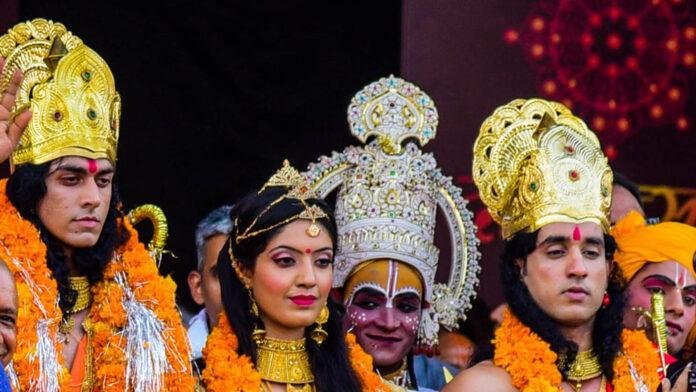Certain Characters and events may take shape according to the region it is being portrayed it depends upon culture, tradition, ecology, and animistic faiths. This makes them more cultural image expression.
In the 1980s, there was a morning in Mizoram where like in the rest of India people sit in front of the TV to watch Ramayana with eagerness and spirituality. This has captured the attention of many non-Hindi Mizo populations which were in a transitional phase from pre-Christian to Christianity. Ramayana influenced many kids in playing bow and arrows which later became their favorite sport. Church asked parents to not let their children play this kind of sport as an attempt to stop Hinduism.
For the population in the Myanmar region, Lord Ram taught them how to cultivate rice. There were localized versions of the Ramayana among different tribes like Ram and Khena. Ram appears as a Bodhisattva while Sita is a weaver in the Bodo version in the tribal community.
There are many tribal versions of Ram Katha in different cultural traditions in the Northeast. It is being written and rewritten, told and retold, adapted, translated, and appropriated in various localized forms by changing some plots little by little.
Ananya Barua associate professor with the Department of Philosophy in Hindy College, Delhi University said, “The Ramayana is not one fixed text of all time. It belongs to all and everyone has their local way of interpreting and reinterpreting the epic. In many tribal Ramayanas, Surpanakha takes a front seat and Sita the back one.” Most states have the adaption of the Valmiki’s version of Ramayana while for some Ramayan can be a feminist version of the Ramayana that can be found among certain tribal communities.




